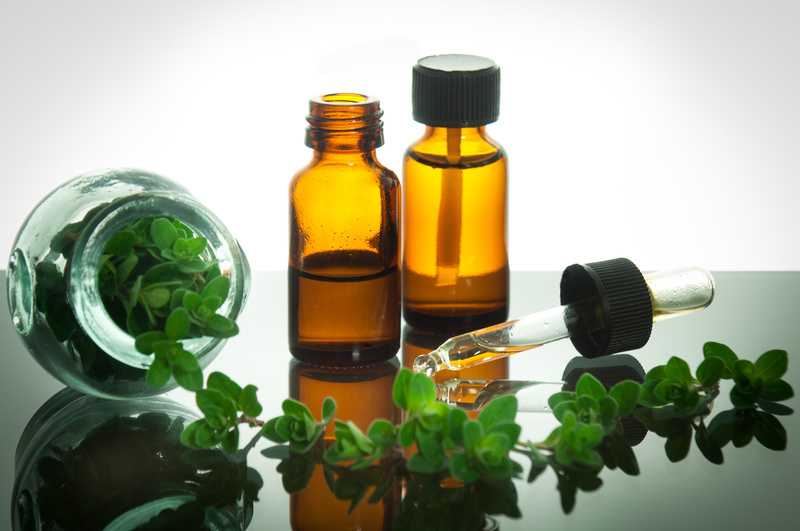Ultimate Guide to Keeping Your Bathroom Free of Mold
Posted on 31/05/2025
Ultimate Guide to Keeping Your Bathroom Free of Mold
Mold in the bathroom can be a persistent and unsightly problem, but with the right strategies, you can maintain a clean, healthy, and mold-free bathroom. This comprehensive guide will equip you with everything you need to know about keeping your bathroom free of mold, including prevention tips, cleaning techniques, and maintenance strategies.


Table of Contents
- Why Bathrooms Are Prone to Mold
- Dangers of Mold in Your Bathroom
- Preventing Mold Growth in Bathrooms
- Best Cleaning Methods to Remove Bathroom Mold
- Bathroom Maintenance Tips to Stay Mold-Free
- Natural Remedies vs. Commercial Products
- When to Call a Professional
- FAQ: How to Keep Your Bathroom Mold-Free
Why Bathrooms Are Prone to Mold
Understanding why bathrooms are so susceptible to mold is the first step in your bathroom mold prevention strategy. Bathrooms offer the ideal environment for mold growth due to:
- High Humidity: Hot showers and baths create steam, which increases moisture levels in the air.
- Poor Ventilation: Without adequate airflow, moist air lingers and surfaces remain damp.
- Organic Material: Dust, soap scum, and even residues from toiletries provide food for mold.
- Frequent Water Exposure: Sinks, showers, tubs, and toilets frequently get wet, increasing moisture accumulation.
Because of these conditions, bathrooms can become a breeding ground for different types of mold, including the common black mold (Stachybotrys chartarum). If not addressed, mold in the bathroom can spread quickly and cause structural and health issues.
Dangers of Mold in Your Bathroom
Mold exposure in the bathroom can have several negative consequences:
- Health Risks: Inhaling mold spores may cause allergies, worsen asthma, and lead to respiratory problems.
- Structural Damage: Mold can degrade drywall, grout, wooden cabinets, and even plumbing fixtures.
- Unpleasant Odors: Musty smells emitted by mold can make your bathroom less inviting.
- Reduced Home Value: Visible mold can deter potential buyers if you're selling your home.
Addressing mold problems promptly helps minimize these risks and keeps your bathroom a safe, pleasant space.
Preventing Mold Growth in Bathrooms
1. Ensure Adequate Ventilation
The key to keeping your bathroom free of mold is minimizing moisture. Proper ventilation is your first line of defense:
- Use Exhaust Fans: Install and use a high-quality bathroom exhaust fan during and after showers.
- Open Windows: If possible, open windows to let fresh, dry air circulate after bathing.
- Leave Doors Open: Keep the bathroom door open when not in use to allow for better airflow.
2. Control Humidity Levels
Keeping humidity between 30% and 50% makes it harder for mold to grow.
- Dehumidifiers: Place a small dehumidifier in bathroom if humidity remains high.
- Moisture-Absorbing Products: Use desiccants like silica gel or moisture-absorbing crystals for extra protection.
3. Dry Surfaces Promptly
After each use, do these simple things to keep your bathroom mold-free:
- Wipe Down Walls and Floors: Use a squeegee or towel to dry tiles, shower doors, and counters.
- Hang Towels to Dry: Spread towels out after use to dry faster and avoid damp piles.
- Avoid Leaving Wet Items: Don't leave washcloths, bath mats, or clothing in damp heaps.
4. Repair Leaks Immediately
Dripping faucets, leaking pipes, or water seeping from grout can all contribute to mold. Address leaks quickly!
5. Use Mold-Resistant Products
- Mold-Resistant Paint: Apply on bathroom walls and ceilings to inhibit mold growth.
- Mildew-Resistant Caulk: Use in tubs, showers, and around sinks.
- Anti-Fungal Shower Curtains: Choose washable or anti-microbial materials for shower liners.
6. Regular Cleaning
Clean the bathroom weekly with a focus on high-moisture areas:
- Scrub Grout and Tiles: Use a brush and cleaning solution to prevent mold colonies.
- Clean Drain Covers and Fixtures: Remove buildup where mold can thrive.
- Wash Mats and Shower Curtains: Launder frequently in hot water with a dash of vinegar.
Best Cleaning Methods to Remove Bathroom Mold
If you spot any signs of mold, act fast to remove it before it spreads. Here are tried-and-tested cleaning methods:
1. White Vinegar Spray
- Pour undiluted white vinegar into a spray bottle.
- Spray directly on moldy areas and leave for at least one hour.
- Scrub with a brush, rinse with water, and dry thoroughly.
Vinegar is a natural mold killer that penetrates porous surfaces to remove spores.
2. Baking Soda Solution
- Mix 1 teaspoon of baking soda with 2 cups of water in a spray bottle.
- Shake and spray the affected areas. Scrub with a brush and rinse.
- Spray again and let air dry. Baking soda not only kills mold but also neutralizes odors.
3. Hydrogen Peroxide
- Apply 3% hydrogen peroxide directly onto moldy surfaces.
- Let it sit for 10 minutes.
- Scrub to remove mold and wipe with a clean, damp cloth.
Hydrogen peroxide is effective for eliminating persistent bathroom mold stains without harsh chemicals.
4. Bleach and Water
- Mix 1 cup bleach with 1 gallon of water. (Ensure room is well ventilated and wear gloves.)
- Apply to moldy grout or tile. Leave for 5-10 minutes, then scrub and rinse.
- Note: Bleach should be used with caution, and not mixed with other cleaners.
5. Commercial Mold Cleaners
- There are many specialty cleaners formulated for bathroom mold; follow manufacturer instructions closely.
Regardless of your chosen method, be sure to dry the area completely afterwards, as moisture is the enemy of any mold prevention effort in bathrooms.
Bathroom Maintenance Tips to Stay Mold-Free
Regular Inspections
- Check shower corners, tile grout, and around fixtures for early signs of mold.
- Inspect caulking for deterioration and reapply as needed.
Keep Clutter to a Minimum
- Limit the number of bottles, loofahs, and items in the shower to allow air flow and minimize hidden mold growth.
Re-Seal Grout Annually
- Apply a grout sealer every year to prevent water penetration and protect against mold growth.
Upgrade Ventilation When Needed
- If your bathroom fan is ineffective, consider installing a model rated for your room size or a fan with a humidity sensor.
Monitor Indoor Humidity
- Use a hygrometer to ensure your bathroom is not overly humid.
Natural Remedies vs. Commercial Products
Natural solutions, such as vinegar, baking soda, and essential oils like tea tree and eucalyptus, can be very effective and are less harsh than chemical alternatives. They are eco-friendly and safe for most surfaces.
However, for stubborn mold problems or black mold in bathrooms, you may need to use commercial cleaners or seek professional help. Always read product labels, follow safety directions, and ventilate your space during and after use.
When to Call a Professional
Sometimes, DIY cleaning is not enough to get rid of bathroom mold--especially if:
- Mold covers a large area (over 10 square feet).
- You suspect mold is behind walls, under floors, or inside ventilation ducts.
- You've experienced recurring, hard-to-treat infestations.
- Household members are experiencing health issues related to mold exposure.
In these cases, consult a mold remediation specialist who can properly assess, contain, and remove mold from your home.
FAQ: How to Keep Your Bathroom Mold-Free
How often should I clean my bathroom to prevent mold?
Weekly cleaning is best. Pay special attention to showers, sinks, and any high-moisture areas. Squeegee or dry tiles after every hot shower.
Is black mold dangerous?
Stachybotrys chartarum, or black mold, can cause significant health issues, especially for those with allergies or weakened immune systems. Remove it promptly and consult a professional for large infestations.
What is the best way to reduce humidity in a bathroom?
Use an effective exhaust fan, open windows, or use a dehumidifier. Wipe down wet surfaces to quickly remove excess moisture.
Are there mold-resistant paints or materials?
Yes! Many paints and construction materials are specially designed to resist mold and mildew. Look for products labeled "mold-resistant" for renovations or new builds.
My bathroom doesn't have windows--what can I do?
Install a strong exhaust fan and use it every time you shower. You can also use a dehumidifier and make drying surfaces a routine habit.
Final Word: Keep Your Bathroom Mold-Free for Good
Maintaining a mold-free bathroom is not just about cleanliness--it's about ensuring the safety and long-term value of your home. By controlling moisture, cleaning regularly, and addressing issues quickly, you can create a healthy, comfortable, and mold-free bathroom for years to come. Bookmark this ultimate guide and make it your go-to resource for all things mold prevention!




